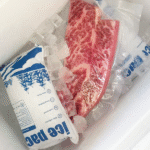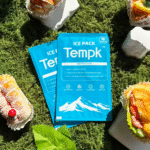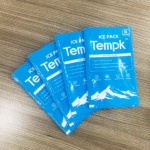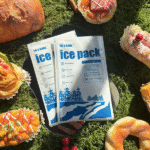Dry ice pellets and صفائح حزمة الثلج الجاف are at the heart of modern frozen shipping. هذه العوامل شديدة البرودة تضمن اللقاحات, اللحوم, وتنتقل العينات البيولوجية بأمان من المصنع إلى الوجهة. في 2025 يواجه سوق الثلج الجاف ضغوط العرض ومتطلبات الاستدامة ومع ذلك يستمر في النمو بسرعة; الاستهلاك العالمي آخذ في الارتفاع حولها 5 % عام بينما يزداد عرض ثاني أكسيد الكربون بمعدل 0.5 %, التسبب في ارتفاع الأسعار بشكل دوري. يشرح هذا الدليل كيفية عمل كريات الثلج الجاف وألواح العبوات, كيفية اختيار التنسيق المناسب لاحتياجاتك, وكيفية التعامل معها وتخزينها بشكل آمن. سوف تتعلم أفضل الممارسات, اعتبارات التكلفة, والتقنيات الناشئة مثل الأنظمة الهجينة, أجهزة الاستشعار الذكية, والكربون الذي يلتقط إنتاج الثلج الجاف - كل ذلك باستخدام لغة واضحة وأمثلة عملية.
ما الذي يجعل كريات الثلج الجاف وألواح الثلج الجاف مختلفة? تعرف على الجانب العلمي وراء الكريات والصفائح وكيف يؤثر كل تنسيق على سرعة التبريد, المدة والتعامل.
متى يجب عليك اختيار الكريات مقابل أوراق العبوة? اكتشف المبادئ التوجيهية القائمة على السيناريو للمستحضرات الصيدلانية, لحمة, التكنولوجيا الحيوية وشحن المواد الغذائية.
ما مقدار الثلج الجاف الذي يجب أن تستخدمه؟? Use practical formulas and tables to calculate pellet weight or sheet count based on transit time and container volume.
What safety and regulatory rules apply in 2025? فهم ملصقات المخاطر, و 1845 وضع العلامات, venting requirements and IATA limits.
Which innovations are shaping the dry ice industry? يستكشف 2025 trends like CO₂ capture, automated pelletizers, أوراق قابلة لإعادة الاستخدام, hybrid PCM systems and smart sensors.
How can you optimize cost and sustainability? Learn strategies to stretch each kilogram of dry ice, reduce waste and adopt greener alternatives.
Understanding Dry Ice Pellets and Pack Sheets
الجليد الجاف هو ثاني أكسيد الكربون الصلب (co₂). عند -78.5 درجة مئوية (-109 درجة فهرنهايت) it is colder than water ice, and it sublimates—turns directly from solid to gas—without leaving liquid behind. Two principal formats dominate cold chain logistics: pellets and pack sheets.
What Are Dry Ice Pellets?
Dry ice pellets are small cylindrical pieces of solid CO₂. Each pellet is typically 3–16 mm in diameter and has a high surface area relative to its mass. This geometry allows rapid heat absorption and intense cooling. When placed inside insulated boxes, pellets create a quick temperature drop to –78.5 °C, freezing the payload and preventing thawing. Pellets are often used in pharmaceutical shipping, biotech sample transport and industrial cleaning due to their fast cooling and precise temperature control. The table below contrasts pellets with other cooling methods:
| طريقة التبريد | نطاق درجة الحرارة | مدة | التطبيق المثالي | فائدة عملية |
| كريات الثلج الجاف | -78.5 درجة مئوية | 24-48 ساعة | شحن بارد للغاية | لا بقايا سائلة; التبريد السريع |
| حزم الثلج الجاف | -40 درجة مئوية إلى -60 درجة مئوية | 36-72 ساعة | Medium temperature shipments | قابلة لإعادة الاستخدام, أبطأ التسامي |
| حزم هلام | 0 درجة مئوية إلى -20 درجة مئوية | 12-24 ساعة | نقل المواد الغذائية القابلة للتلف | Budget friendly; قابل لإعادة الاستخدام |
| مواد تغيير المرحلة (بي سي إم) | قابل للتخصيص | 24-96 ساعة | الأدوية الحيوية أو مجموعات التشخيص | نطاقات درجة حرارة مستقرة |
Pellets are single use and require personal protective equipment (PPE) such as insulated gloves and goggles because direct contact can cause frostbite. Their rapid sublimation also means you need adequate ventilation to avoid CO₂ buildup. In transit they typically last 24–48 hours depending on insulation quality and external temperatures.
ما هي صفائح الثلج الجاف؟?
صفائح حزمة الثلج الجافة (also called dry ice sheets) are flexible panels filled with dry ice pellets or CO₂ snow encased in durable plastic or woven fabric. They are engineered to provide steady, extended cooling up to 72 ساعات. على عكس الكريات السائبة, sheets minimize vapor release and can be reused multiple times, reducing waste and handling risks. Pack sheets often incorporate pockets or cells that house pellets; عندما تجمد, they form a rigid panel that fits neatly around or above your product, preventing movement and ensuring uniform temperature.
Key advantages of pack sheets include:
مدة التبريد الممتدة – Many pack sheets maintain a stable temperature up to 72 ساعات.
No direct contact risk – The pellets are sealed inside, reducing CO₂ exposure and frostbite risk.
Reusable design – High quality sheets can be refrozen and reused, cutting packaging waste and cost.
أحجام قابلة للتخصيص – Sheets are available in various cell counts (على سبيل المثال, 24خلية, 48خلية) and can be cut to fit different containers.
Because pack sheets cool gradually, they are well suited for mid temperature shipments such as frozen meat, المأكولات البحرية, and biotech samples requiring –20 °C to –60 °C conditions. Businesses often combine pack sheets with pellets to achieve both rapid and sustained cooling.
Choosing Between Pellets and Pack Sheets
The choice between dry ice pellets and pack sheets depends on your product’s temperature sensitivity, مدة الشحن, ومتطلبات التعامل. Use the following guidelines:
Ultra Cold or Flash Freezing: Choose Pellets
الأدوية & اللقاحات – Many biologics require –70 °C or lower. Pellets deliver immediate temperature drops; high density pellets in vacuum insulated shippers can keep vaccines stable for 48 ساعات, تقليل مخاطر التلف عن طريق 40 %.
Cryogenic Samples – Laboratory and biotech samples often need ultra cold storage. Pellets provide precise cooling and easy dosage adjustments.
Industrial Cleaning – Dry ice blasting uses pellets for cleaning machinery without water residue. Rapid sublimation is essential.
Medium Cold or Extended Transit: Choose Pack Sheets
اللحوم والمأكولات البحرية – Dry ice pack sheets are ideal for long distance meat shipping. They keep meat frozen at –29 °C (–20 °F) without producing meltwater, preserving product quality. With proper layering, they maintain freezing conditions for 24–48 hours.
الأطعمة المتخصصة – Frozen desserts, gourmet chocolates or meal kits requiring –20 °C to –40 °C benefit from the controlled release of CO₂. The sealed design prevents cross contamination.
Reusable Logistics – For recurring shipments or closed loop systems, pack sheets minimize waste and handling risks. Their extended life offsets the higher upfront cost.
التبريد الهجين: Combine Both
في 2025 many shippers are adopting hybrid cooling systems combining pellets and pack sheets with phase change materials (PCMS). This approach provides fast cooling to prevent supercooling, then sustained temperatures for extended transit, and reduces overall CO₂ usage. A typical hybrid setup might layer pellets at the bottom for initial flash freezing, pack sheets above the product, and PCM packs to maintain specific temperature bands. This combination can extend hold times by 25 % مع تقليل استهلاك الثلج الجاف عن طريق 18 %.
صيغ التحجيم
To determine how much dry ice you need, النظر في مدة الشحن, payload volume, وعزل الحاويات. For pellets, a common rule is to allocate 5–10 kg of dry ice per 24 hour period per 100 لتر من الحجم المعزول. لأوراق الحزمة, one 24 cell sheet typically provides 8–12 hours of cooling; multiple sheets can extend duration up to 72 ساعات. على سبيل المثال:
| حجم الحاوية | وزن الحبيبات الموصى به | Sheet Quantity | وقت الانتظار المتوقع |
| 10 ل | 0.75-1 كجم | 1 ملزمة | ≈ 12 ساعات |
| 20 ل | 1.5–2.0 kg | 2 أوراق | ≈ 24 ساعات |
| 30 ل | 2.5–3.0 kg | 3– 4 أوراق | ≈ 36 ساعات |
| 40 ل | 4.0–5.0 kg | 4– 5 أوراق | ≈ 48-72 ساعة |
Always pre chill your insulated container and fill empty spaces with dunnage to minimize heat transfer. Pre conditioning reduces sublimation rate by up to 15 %.
How to Pack Dry Ice Pellets & Pack Sheets Safely
1. تحضير & ترطيب
If using reusable dry ice sheets, soak them in water before freezing so the cells activate properly. Freeze sheets flat to achieve a uniform shape.
2. Pre Chill Containers
Pre chill your box or cooler using ice packs or by placing it in a freezer for several hours. This lowers the initial thermal shock and slows sublimation.
3. تقنية الطبقات
الطبقة السفلية – Place pellets or a pack sheet at the bottom of the insulated container. Pellets provide rapid cooling; sheets ensure steady release.
طبقة عازلة – استخدام الورق المقوى, corrugated plastic or a thin layer of foam to separate dry ice from the product. This prevents direct contact and freezer burn.
وضع المنتج – Place the product inside, filling void spaces with cushioning materials like bubble wrap or foam inserts. Minimizing voids reduces warm air pockets.
طبقة أعلى – Add additional pack sheets or pellets above the product to maintain even temperature distribution. مغسلة الهواء البارد, so having dry ice at the top ensures downward cooling.
تهوية – Ensure the container has vent holes or breathable insulation. لا تقم أبدًا بوضع الثلج الجاف في صندوق محكم الغلق; sublimating CO₂ can build pressure and rupture packages.
4. التغليف & وضع العلامات
Clearly label packages with “Dry Ice” or “Carbon Dioxide, صلب,” the UN1845 number, والوزن الصافي للثلج الجاف.
ألصق فئة 9 hazardous materials label if shipping by air.
Comply with IATA limits: 2.5 kg per package on passenger aircraft and up to 200 كجم على رحلات الشحن.
5. التعامل & PPE
Wear insulated gloves and goggles when touching pellets or sheets. CO₂ frost can cause severe skin burns. Do not ingest dry ice or seal it in an airtight container; gas buildup can lead to explosions. Always store dry ice in ventilated areas and keep the storage environment between –80 °C and –20 °C. Rotate inventory using a first in, first out system to avoid using older, sublimated stock.
اعتبارات التكلفة & الاستدامة
Dry ice costs vary widely due to supply constraints. Since CO₂ supply growth (0.5 % كل سنة) lags behind demand growth (≈5 % كل سنة), spot prices can spike by up to 300 % خلال النقص. بالإضافة إلى ذلك, تم تقييم سوق الثلج الجاف العالمي بـ $1.54 مليار في 2024 ومن المتوقع أن يصل $2.73 مليار من قبل 2032 (7.4 % CAGR). To manage costs:
تحسين العبوة – Use right sized containers and high performance insulation to reduce sublimation and shrink your dry ice requirements.
Mix Cooling Formats – Hybrid packouts using pellets, sheets and PCMs can cut dry ice usage by 18 % while improving temperature consistency.
Plan Procurement – Secure long term supply contracts or local pelletizer units to avoid price volatility.
Explore Bio CO₂ Sources – Many suppliers now capture CO₂ from bioethanol fermentation or industrial processes, creating a circular loop. Choosing suppliers that use renewable CO₂ helps reduce your carbon footprint and supports sustainable practices.
ابتكارات الاستدامة
Modern cold chain players are adopting eco friendly measures:
التقاط ثاني أكسيد الكربون & استعادة – Capturing CO₂ from bioethanol or industrial sources reduces reliance on fossil based CO₂ and supports circular economies.
صفائح الثلج الجاف القابلة لإعادة الاستخدام – Durable sheets can be refrozen multiple times, خفض النفايات والتكلفة.
أجهزة الاستشعار الذكية & تتبع إنترنت الأشياء – Real time monitoring of CO₂ levels, temperature and sublimation rates helps fine tune cooling and prevent waste.
الحزم الهجينة – Integrating PCMs and insulated liners reduces CO₂ usage and carbon footprint.
2025 Industry Trends & رؤى السوق
يتطور مشهد سلسلة التبريد بسرعة. وتشمل الاتجاهات الرئيسية:
ديناميات السوق & Supply Pressures
The dry ice market faces supply stress due to limited CO₂ availability and high demand. Spot prices have spiked by up to 300 % أثناء أزمة العرض. Manufacturers are responding by building localized production hubs and on site CO₂ capture to reduce transport losses. Shippers are diversifying cooling strategies—mixing dry ice with PCMs and better insulation—to stretch supply.
شكل & اعتبارات الأداء
Selecting the right format (بيليه, ملزمة, block or slice) dramatically affects performance. Large blocks sublimate slowly for long shipments; pellets provide rapid cooling but vaporize faster; thin slices offer a balance and fit neatly into packaging. Proper container design—high performance insulation, التقليل من مساحة الفراغ, and pre conditioning—can reduce sublimation to 3–8 % يوميا. Mistakes like leaving warm voids or poor venting can compromise product integrity.
الاتجاهات الخاصة بالقطاع
طعام & Meat Processing – Thinner pellets and slices allow rapid cooling on processing lines, while blocks remain the format of choice for bulk transport. Better insulated boxes extend hold times and minimize sublimation.
الأدوية & مختبرات – New barrier technologies slow CO₂ gas release to prevent supercooling, and real time monitoring helps safeguard payloads. Reusable PCM shippers reduce dry ice consumption.
صناعي & تنظيف – Dry ice blasting contractors secure long term supply contracts and invest in local pelletizing to avoid being deprioritized during shortages.
الابتكارات & الاتجاهات المستقبلية
الكريات الآلية – Modern pelletizers produce consistent pellet size, reducing waste and enhancing cooling efficiency.
صفائح الثلج الجاف القابلة لإعادة الاستخدام – New sheets combine the flexibility of packs with the rapid cooling of pellets.
أجهزة استشعار المراقبة الذكية – IoT devices track real time CO₂ levels and sublimation rates to optimize replenishment.
Bio Based Packaging – Integrating bio based or recyclable materials in packaging aligns with sustainability goals.
الأنظمة الهجينة – Combining dry ice with PCMs and smart insulation reduces carbon footprint and costs.
سيناريوهات عملية & نصائح المستخدم
سيناريو 1: Shipping Frozen Meat Overseas
تحدي: A meat exporter needs to ship 20 kg of beef from California to Japan, a 48 hour transit. The cargo must stay below –18 °C.
حل: Use four 24 cell dry ice pack sheets layered above and below the beef. Pre chill the EPS container and line it with a PCM pack at –21 °C. يضيف 3 kg of dry ice pellets on top to achieve rapid freezing. Ensure vents allow CO₂ gas to escape. This packout provided 48 hours of stable temperature in trials, with no thawing and 60 % reduction in packaging waste compared with single use pellets.
سيناريو 2: Vaccine Distribution During a Supply Crunch
تحدي: A pharma company must deliver mRNA vaccines requiring –70 °C conditions. Due to CO₂ shortages, pellet supply is limited.
حل: اعتماد التبريد الهجين: 50 % of the container volume uses dry ice pellets for rapid cooling; the remaining 50 % uses PCMs tuned to –70 °C and reusable pack sheets. Real time monitoring sensors track temperature and sublimation. This method cut pellet usage by 25 % while maintaining regulatory compliance. Long term contracts with local pellet producers ensure priority supply during peaks.
سيناريو 3: Artisan Ice Cream Delivery
تحدي: A small business ships artisan ice cream across states for 24 ساعات. Customer satisfaction hinges on product texture and minimal packaging waste.
حل: Use reusable dry ice sheets combined with a single PCM pack at –18 °C. Pre condition the insulated mailer. Because ice cream only needs –15 °C to stay firm, pack sheets provide steady cooling without over freezing, and there is no messy meltwater. Customers returned the sheets in a provided envelope for reuse, reinforcing sustainability values.
Quick Reference Table: Format Selection
| نوع الشحنة | Recommended Format | سبب | Additional Tip |
| اللقاحات & البيولوجيا | High density pellets or hybrid (الكريات + بي سي إم) | Achieves –70 °C quickly and maintains for 48 ساعات | Use data loggers to monitor; vent containers appropriately. |
| لحمة & المأكولات البحرية | صفائح حزمة الثلج الجاف القابلة لإعادة الاستخدام | Ensures –29 °C to –40 °C without direct contact | Layer sheets above and below; fill voids to reduce sublimation. |
| Frozen Dessert E commerce | أوراق الحزمة + بي سي إم | Provides controlled cooling with minimal frostbite risk | Encourage customers to return sheets for reuse. |
| Industrial Cleaning & Blast | Small pellets | Provide rapid sublimation and efficient cleaning | Secure long term pellet supply to avoid shortages. |
أمان & الامتثال التنظيمي: 2025 متطلبات
يصنف الثلج الجاف على أنه مادة خطرة (فصل 9). Compliance ensures worker safety and avoids shipping delays.
رقم الأمم المتحدة & تسميات: ضع علامة على العبوات بـ "الثلج الجاف" أو "ثاني أكسيد الكربون"., صلب,"بما في ذلك الأمم المتحدة 1845 رقم, and specify net weight.
Hazard Labels: فئة اللصق 9 تسميات الخطر; this is mandatory for all modes of transport.
حدود الوزن: Adhere to IATA limits—2.5 kg of dry ice for passenger aircraft and up to 200 كجم على رحلات الشحن.
متطلبات التهوية: يجب أن تسمح العبوة بخروج غاز ثاني أكسيد الكربون لمنع تراكم الضغط.
التوثيق: Include a bill of lading or safety data sheet if required by the carrier.
PPE & تمرين: Train staff to handle dry ice using insulated gloves and goggles. Provide emergency procedures for CO₂ exposure, frostbite or container rupture.
الأسئلة المتداولة
How long do dry ice pellets last?
Pellets typically last 24–48 hours, depending on pellet size, container insulation and ambient temperature. Proper pre conditioning and minimizing void space can extend duration.
Can dry ice sheets replace gel packs?
نعم. Dry ice sheets maintain colder temperatures (–29 °C to –40 °C) for 24–48 hours and leave no meltwater, whereas gel packs only keep temperatures near 0 °C for 12–24 hours. Use sheets when you need sub freezing conditions.
Are dry ice pellets safe for food shipping?
الثلج الجاف آمن عند التعامل معه بشكل صحيح. Always avoid direct contact with food by placing a buffer layer or using sealed sheets. Vent containers to prevent CO₂ buildup and label packages correctly.
What is the carbon footprint of dry ice?
Traditional dry ice is produced from fossil CO₂. لكن, many suppliers now capture CO₂ from bioethanol and industrial processes, الحد من انبعاثات الغازات الدفيئة. Choosing these suppliers supports circular economies.
كيف أحسب كمية الثلج الجاف اللازمة؟?
Use about 5–10 kg of dry ice pellets per 24 ساعة لكل 100 L of container volume. لأوراق الحزمة, estimate one 24 cell sheet per 12 ساعات من التبريد; adjust based on transit duration.
What are the alternatives to dry ice?
Alternatives include gel packs, PCMs and mechanical refrigeration. Gel packs are non hazardous and reusable but only maintain 0 °C to –20 °C for up to 24 ساعات. PCMs offer customizable temperature ranges and extended duration, often used in combination with dry ice. Active containers provide refrigeration but are costly and require power.
هل يمكنني إعادة استخدام صفائح الثلج الجاف؟?
نعم. High quality pack sheets can be refrozen and reused multiple times, تقليل النفايات. Inspect for leaks or damage before reuse and follow the same safety guidelines.
Why is venting important?
كما يسامي الثلج الجاف, CO₂ gas expands significantly. بدون تهوية, pressure can build up and rupture containers. Always ensure vent holes or breathable insulation.
ملخص & التوصيات
Dry ice pellets and dry ice pack sheets are indispensable tools for ultra cold shipping. Pellets provide rapid cooling and precision for pharmaceuticals and industrial applications, while pack sheets offer longer hold times and safer handling for meat and food shipments. في 2025 the dry ice industry faces supply challenges and sustainability pressures, pushing innovation toward hybrid cooling systems, CO₂ capture and smart sensors. To optimize performance and cost:
اختر التنسيق الصحيح – Pellets for quick, ultra cold needs; pack sheets for extended mid range cooling.
استخدم الحلول الهجينة – Combine dry ice with PCMs and high performance insulation to extend duration and reduce CO₂ usage.
اتبع أفضل الممارسات – Pre chill containers, layer properly, ventilate packages and comply with hazard labeling.
استثمر في الاستدامة – Source dry ice from bio CO₂ suppliers, adopt reusable sheets and integrate smart monitoring.
Plan procurement – Secure supply contracts and local pelletizer options to navigate volatile markets.
باتباع هذه الإرشادات, you can maintain product integrity, minimize cost and environmental impact, and stay ahead of cold chain innovations.
حول Tempk
Tempk is a global leader in cold chain packaging and thermal control solutions. We specialize in dry ice pellets, pack sheets and advanced insulation technologies that keep your products frozen or chilled from origin to destination. لدينا ص&D team develops eco friendly materials, smart monitoring devices and hybrid cooling systems to help you meet regulatory requirements and sustainability targets. Contact us for custom guidance on optimizing your cold chain operations.






















